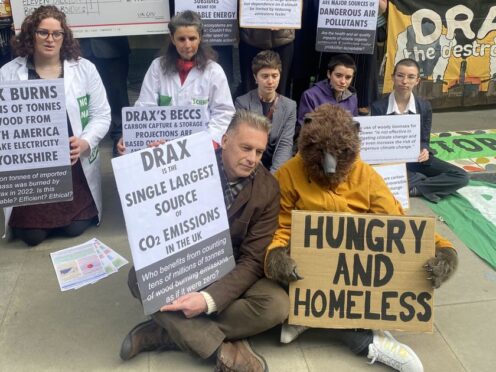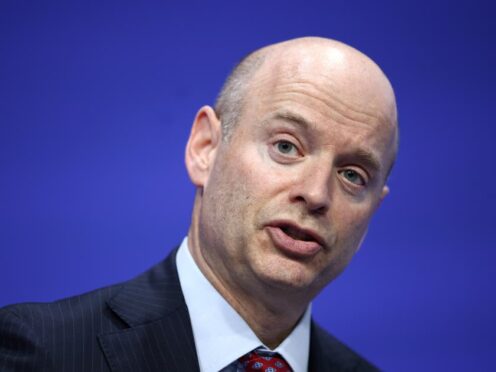Are negative interest rates on the cards? Brewin Dolphin’s Head of Office, David Barclay, shares his thoughts on the topic.
After putting negative interest rates officially ‘in the toolbox’ in August of this year and placing the financial sector on notice about negative interest rates, market watchers have been scouring the minutes of the latest meeting of the Bank of England’s Monetary Policy Committee.
The Committee, however, did not even consider voting on the topic of negative interest rates as a policy response to the forecasted Covid-19 related recession, preferring to pull further levers such as increasing quantitative easing. The spectre of the central bank imposing negative interest rates for the first time in their 326-year history remains very much a possibility.
At its simplest, the idea of negative interest rates is to discourage saving and encourage lending and spending. Under a negative-rate regime, commercial banks pay the central bank for holding their reserves, instead of earning interest as is usually the case (even if it is at historic lows of 0.1%).
The most often-cited rationale is that this would encourage banks to lend in order to avoid the extra cost of storing their reserves, but there are reasons to question this logic.
Firstly, and most importantly, banks cannot and do not lend from reserves. Reserves are for funding deposit withdrawals and settling interbank payments. Secondly, the quantity of reserves has little or no impact on lending decisions. The decision about whether to advance a loan depends not on the quantity of reserves, but on the commercial opportunity available to the bank.
Nonetheless, negative interest rates appear to be remaining under consideration despite the MPC declining to discuss the topic at their most recent meeting. It would be a genuinely novel approach to take.
What is the likely impact on savers and investors?
The first point to make is that negative rates are very unlikely to be applied to ordinary savings accounts. The reason is that if customers saw they were losing money, they would simply withdraw their savings and keep the cash at home or find a better-paying bank.
However, it is likely that if the UK base rate turns negative, saving rates, which already average below 1% on instant access accounts, will fall further towards zero, but not below, as banks try to offset the added cost of holding their reserves with the Bank of England. Negative interest rates would therefore inevitably mean ultra-low rates on bank deposits, which is of course bad news for savers.
Whether or not negative interest rates are applied to bank deposits, one thing is certain – the days of ‘free’ banking in the UK may be over sooner than we think. Writing cheques, withdrawing money from ATMs, and transferring cash are generally free in the UK which puts us at odds with the majority of the world. These account costs are kept artificially low by socialising the fees across all UK bank users by increasing charges in other areas such as unauthored overdrafts. In a world of ultra-low interest or negative interest rates, we can all expect to see banking costs creep upwards over the coming years.
As a result of these increased costs, more savers could be encouraged to seek a better return by investing in equities, thereby pushing prices up.
So, while negative rates are a sign that the economy is in trouble, they could also end up boosting share prices. From an investor’s perspective, a step that would boost business confidence and encourage savers to invest would be a positive thing. The question of course is would it work? Either way, it demonstrates how the Bank of England is thinking about the longer-term recovery and how best to support wider growth.
For the individual investor, investing in equities is not without risk, therefore, it’s important to have a diversified and risk-aware approach. There are also a range of tax-efficient savings vehicles such as ISAs and SIPPs which can make investing in the stock market reasonably straightforward. If you are new to equity investing a financial adviser can help you select investments that are right for you.
Whilst cash at the bank remains incredibly important, over the long-term cash-based savings vehicles available in the UK are seeing their prospective returns drop. Returns from cash and bonds will almost certainly fail to offset the erosion of value that comes from inflation. These assets still have an important role to play as ballast within a portfolio which can be drawn upon when markets fall and buying opportunities appear. However, in our opinion, the main burden of savings growth now rests firmly on equity markets.
Find out more. Visit the Brewin Dolphin website or Facebook page.
Disclaimers:
The value of investments and any income from them can fall and you may get back less than you invested.
Please note that this document was prepared as a general guide only and does not constitute tax or legal advice. While we believe it to be correct at the time of writing, Brewin Dolphin is not a tax adviser and tax law is subject to frequent change. Tax treatment depends on your individual circumstances; therefore you should not rely on this information without seeking professional advice from a qualified tax adviser. Refer to Tax Thresholds in Wales and Scotland, as appropriate.
Past performance is not a guide to future performance.
No investment is suitable in all cases and if you have any doubts as to an investment’s suitability then you should contact us.
The information contained in this document is believed to be reliable and accurate, but without further investigation cannot be warranted as to accuracy or completeness.
The information contained in this publication is believed to be reliable and accurate, but without further investigation cannot be warranted as to accuracy or completeness
The opinions expressed in this document are not necessarily the views held throughout Brewin Dolphin Ltd.










